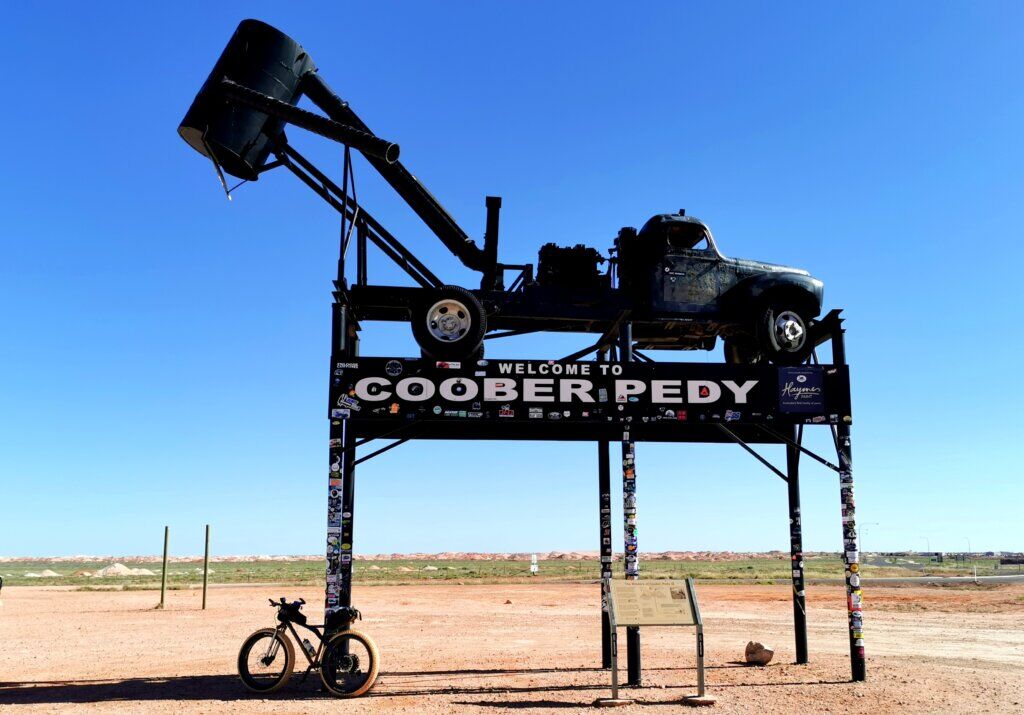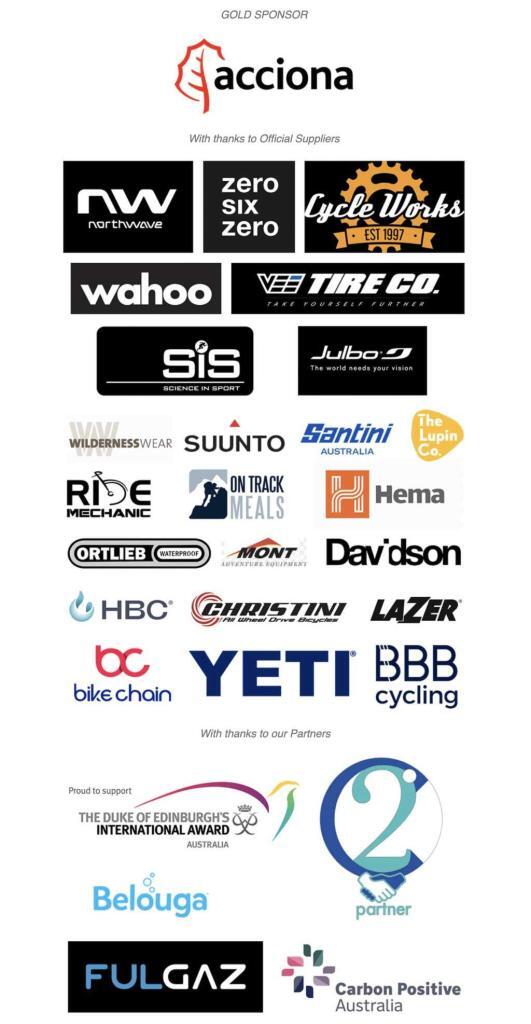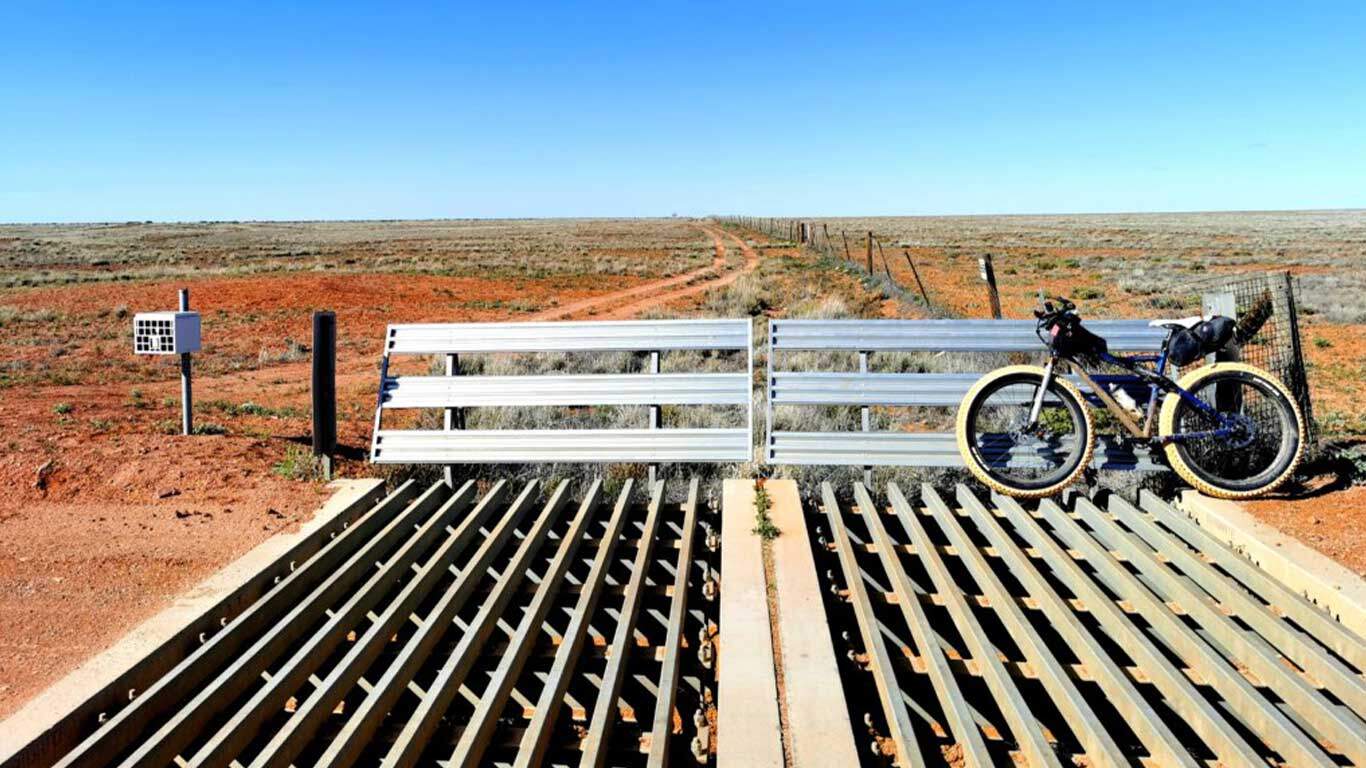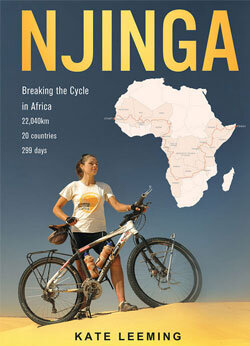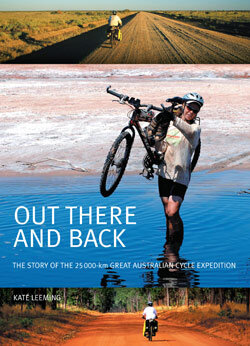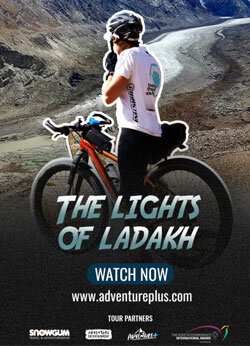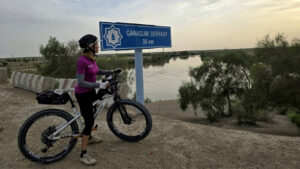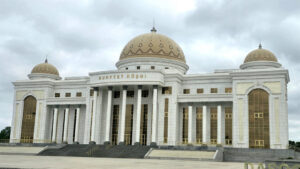Dates: 5th July – 12th July
Woomera to Coober Pedy: 575 km
Total distance: 2486 km
I divided this blog into two parts because it is bookended by visits to two renowned opal mining towns – but there was too much information for one blog entry.
DAY 28 | 86 KM
The ride from Beresford Siding (Old Ghan, Oodnadatta Track) to Anna Creek was a short 68km, although the stiff headwind didn’t give it to me easily. The first 20km was stoney and corrugated with no tree cover to protect me from the wind. There were several muddy water crossings, which I negotiated with the all-wheel drive system switched on, and there was a lot of water still flooding the landscape in between the dunes. The rest of the ride was over a smoother, clay-based surface, which I appreciated. About 15km east of William Creek, I stopped to photograph an impressive jump-up, the lower level I guessed was on the Lake Eyre floodplain.
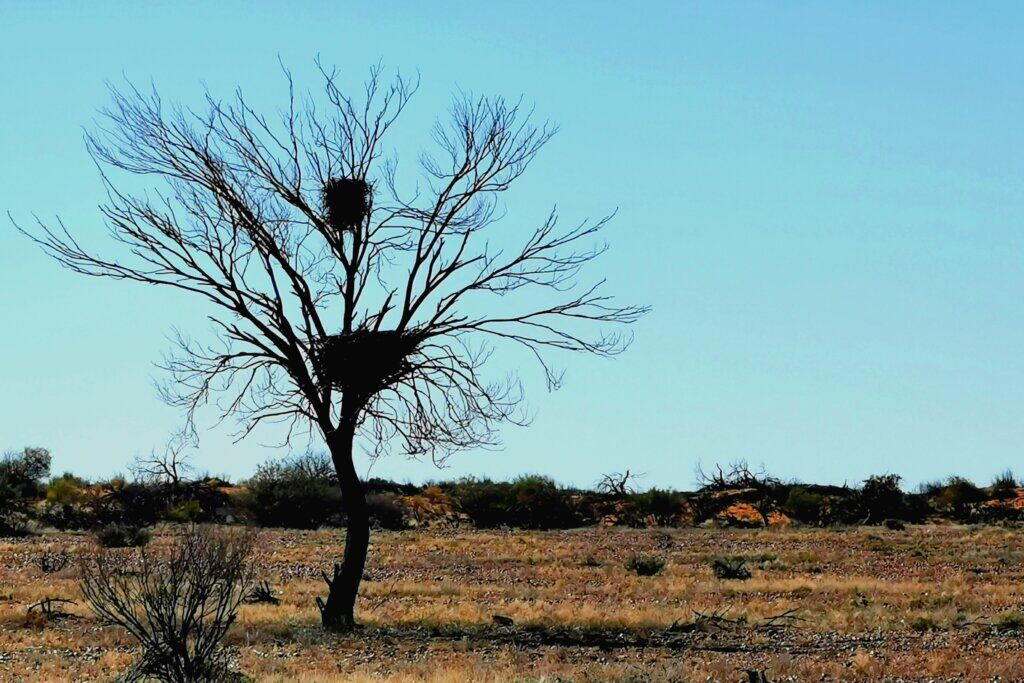
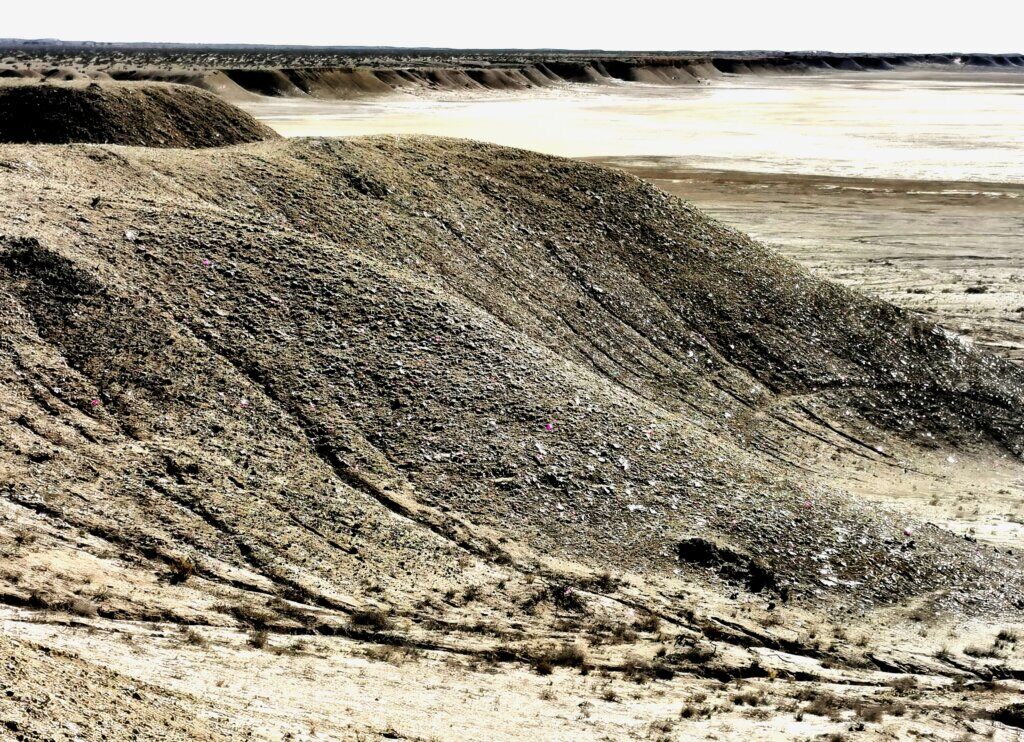
We stopped at William Creek for lunch at the famous hotel – it’s burgers have been voted some of Australia’s best, so I had to try one. Not being a real burger person, I enjoyed it, but my lunch stayed heavy in my stomach for the final 18km ride to Anna Creek Station where I had arranged for us to stay.
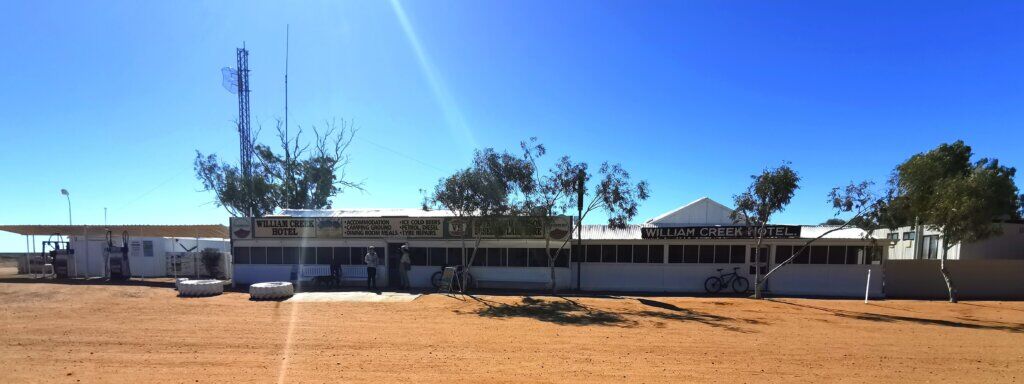
Anna Creek is often referred to as the world’s largest cattle station. The 23,677 km square (5.8 million acres, the size of Israel), the land is a blend of sand hill country with swamps and large areas of gibber tableland. (I also should note that the station website lists the size of the Anna Creek Station as 15,746 km square, so I am not sure which is correct in 2023). The property has a long history as a working station dating back to 1863, and from its present site in 1893. Originally it carried sheep, but after significant losses due to dingo attacks, the owners switched to raising cattle.
Ownership has changed several times. In 1935 Anna Creek became part of S Kidman & Co, joining the already owned Stuarts Creek Station (since 1919) and The Peake Station (since 1902). In December 2016, Williams Cattle Company acquired Anna Creek Station from S Kidman & Co (along with The Peake Station), a sale that kept the property from being a foreign-owned investment. A large chunk of Anna Creek Station is in the military-sensitive Woomera Rocket Range.
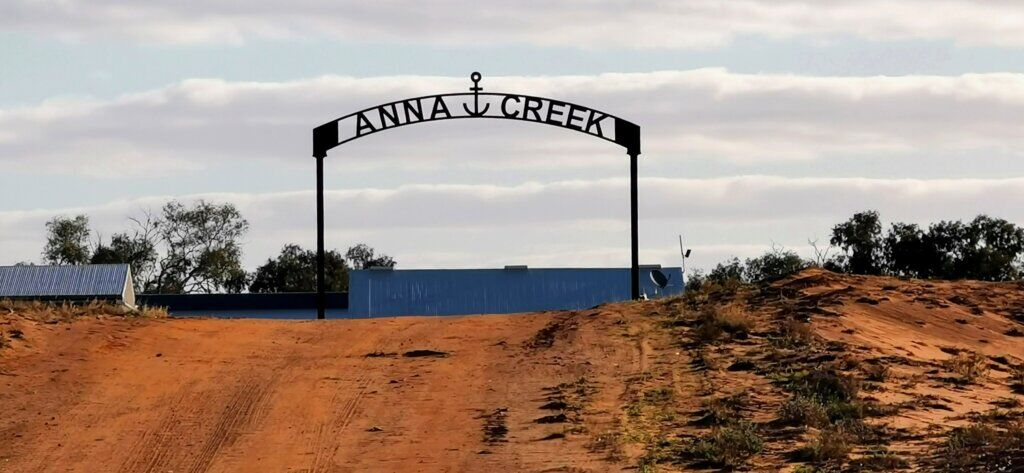
I rode into the homestead (a beautiful stone walled home with several employees’ houses and sheds) in the mid-afternoon and was greeted by Matthew Williams, the station manager. Matt was pretty busy, but made time for us and after a great chat, gave us permission to camp beside Anna Creek. The homestead/headquarters is situated seemingly precariously on the Anna Creek floodplain, but the Williams family has built impressive levy banks to protect the buildings in times of flood – they don’t do things by halves around here!
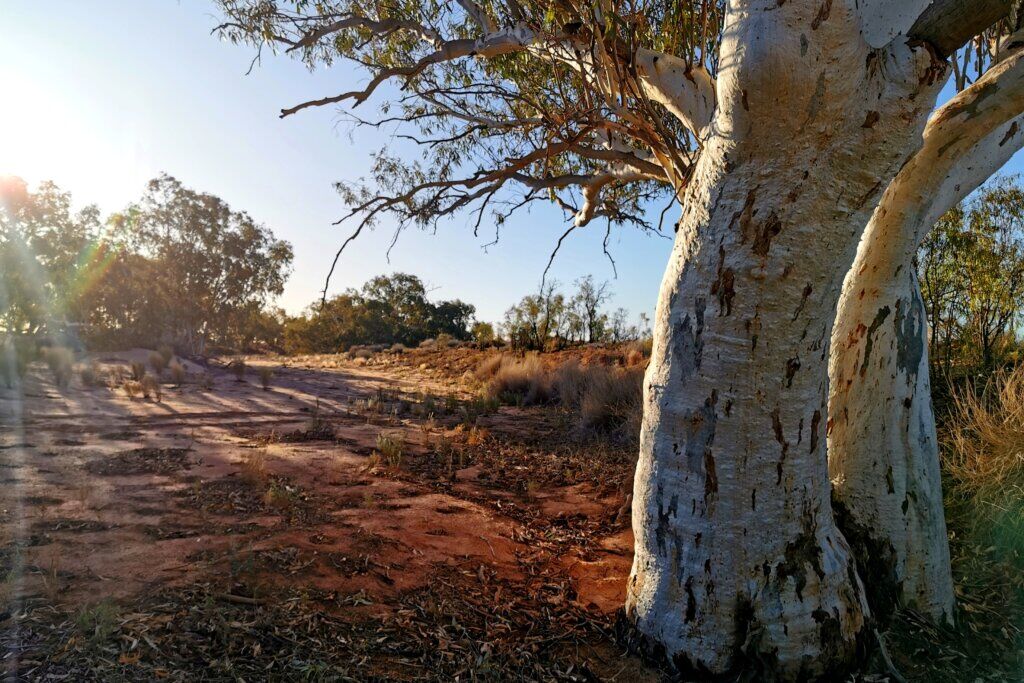
DAY 29 | REST
Matthew’s parents Trevor and Helen live and manage the first of their seven properties in the region, Nilpinna, 70km north of William Creek, a neighbouring property to Anna Creek. En route to a meeting at William Creek Hotel, Trevor diverted to where we were camped beside Anna Creek to meet us. Understandably guarded at first, he soon opened up and agreed to do an interview, driving Gelareh and I to the nearest cattle yards to do the filming.
We covered a lot of territory with our chat – a little about the history and the importance of the Ghan Railway to all cattle stations in the region. The Ghan was a lifeline for receiving supplies, transporting cattle to Adelaide to market, receiving mail and managing in times of flood and drought.
As I have learned on other stations I have visited previously, sustainability is essential to managing their business – they must play a wise, long term game. They have to know their land intimately and its sustainable threshold to determine the carrying capacity (number of cattle), and this changes from season to season. The productivity per square kilometre of a desert station is very low, so they need a lot of land to produce the cattle. Cattle sold by the Williams Pastoral Company are certified as organic. Out there, achieving this is pretty simple – cattle must fend for themselves, grazing on saltbush and any vegetation they can find. Trevor mentioned some of the techniques they use for ensuring their cattle don’t just overgraze one area – they position the waters and yards (where they are released to pasture) so there are more even grazing patterns, reducing issues with desertification.
Keeping costs down was the key to business success according to Trevor. Over the last decade, technology has changed so much, allowing the land to be managed more cost-effectively. Networks of water supplies can now be checked using an iPad from anywhere, so they can check the water level in a tank or if there is a problem with a well, pipe or trough, they can deal with it efficiently. Trevor said they still physically check the waters but now the process has been streamlined.

It was weird visiting a cattle station the size of Israel and not see a cow! Due to the recent rains, the cows didn’t need to come in to drink as there was so much surface water lying on top of the clay pans. Mustering, when there is a lot of action, happens twice a year – September is the next mustering period.
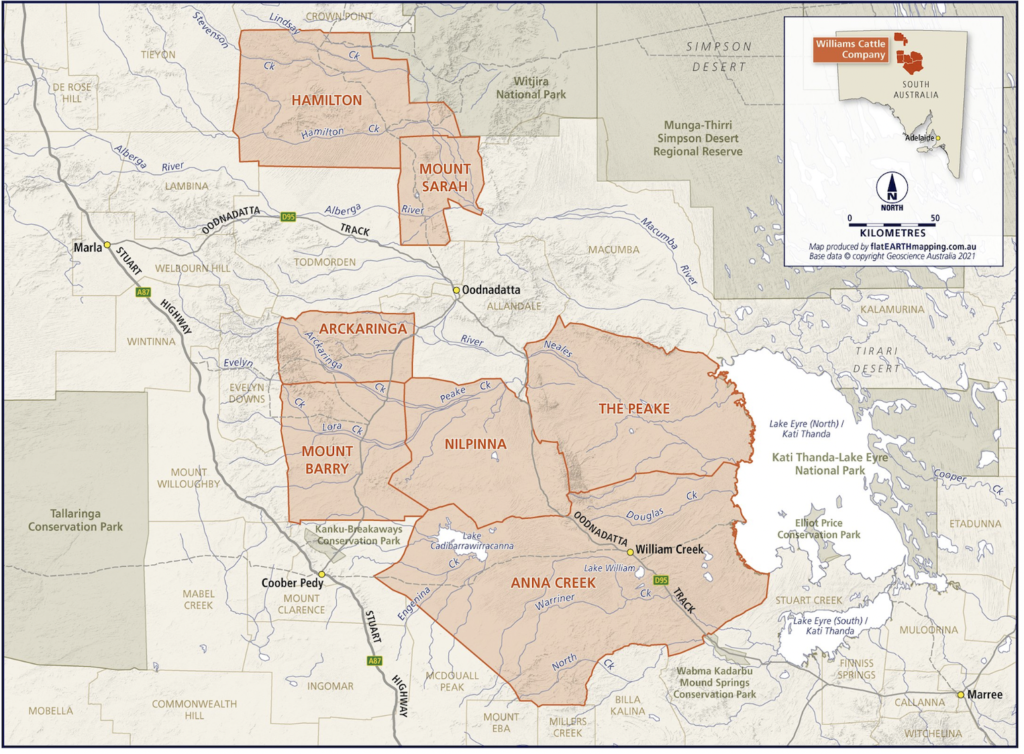
While Gelareh and I were out with Trevor, the support team had detected a serious problem with Martin and Sandra’s Ford F-350 vehicle. Martin and Russell are very skilled mechanics and were under the vehicle, checking out the differential. Something was wearing and there were metal filings mixed with the oil. It was an unusual problem that they couldn’t fix – even though they are extremely well-prepared.
They made the decision to drive 18km back to William Creek as we had planned, to take part in the Williams family get together and stay the night there. Russell hitched our trailer to his vehicle to reduce the pressure on the Ford.
The evening was very enjoyable and we were able to meet more of the Williams family, including Helen, who manage some of their properties.
DAY 30 | 90 KM
Trevor Williams introduced Gelareh and I to Trevor Wright, an entrepreneur and the owner of Wrights Air (scenic flights over Lake Eyre and surroundings), the pub and basically the whole town! He arrived there from country Victoria about 30 years ago and slowly developed the scenic flights business, bought the publican’s house and renovated it, then several blocks of land in the tiny town, and finally, the hotel. He’s developed the place in an environmentally and socially conscious way, replacing the diesel generators with solar power (reducing weekly diesel consumption from 400L to 40L), significantly developed accommodation by building rooms and improving the caravan and camping options. Trevor has worked hard to develop the place into the social hub for hundreds of kilometres radius. They do not sell cigarettes or have any gambling machines at William Creek Hotel. He also has some exciting developments with the local First Nations people.
Trevor gave Gelareh an unbooked seat on one of the scenic flights over the Anna Creek Painted Desert and Lake Eyre, which she was treated to as I headed off, pedalling towards Coober Pedy. I cycled with only Russell in support while the others stayed in William Creek to try to deal with the mechanical issue. Martin didn’t want to drive his vehicle long distances in case he did more damage. It was an incredibly worrying and frustrating situation.
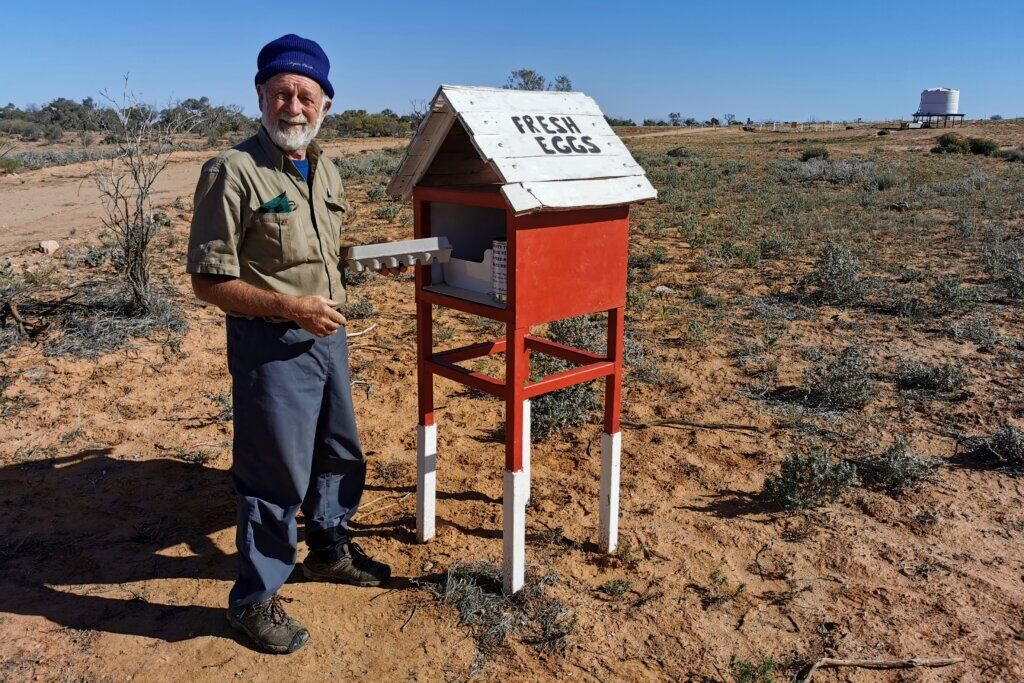
I pushed out 90km and Russell set up camp at Enginina Creek. Rick and Gelareh arrived soon after but the damaged truck was still in William Creek.
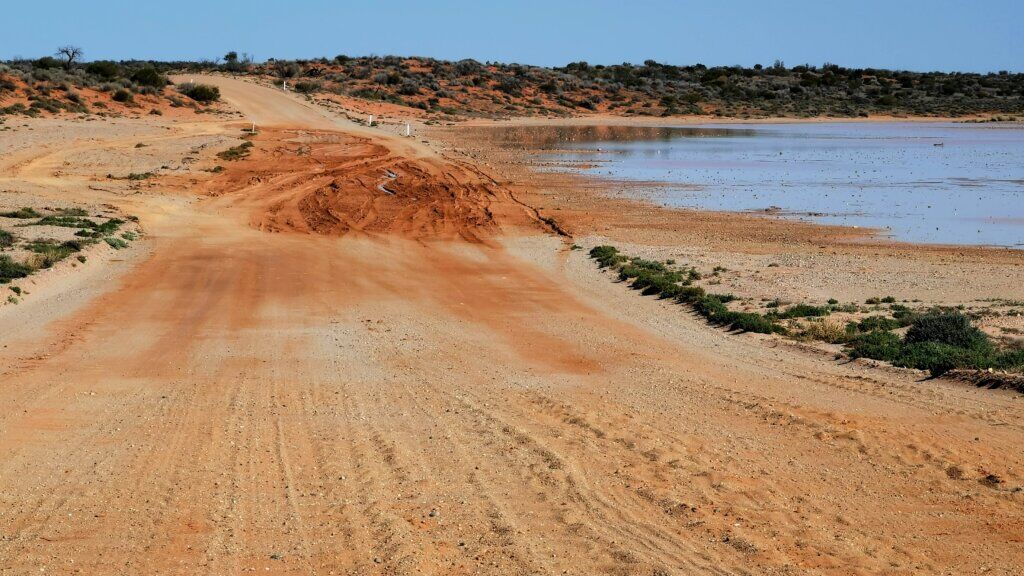

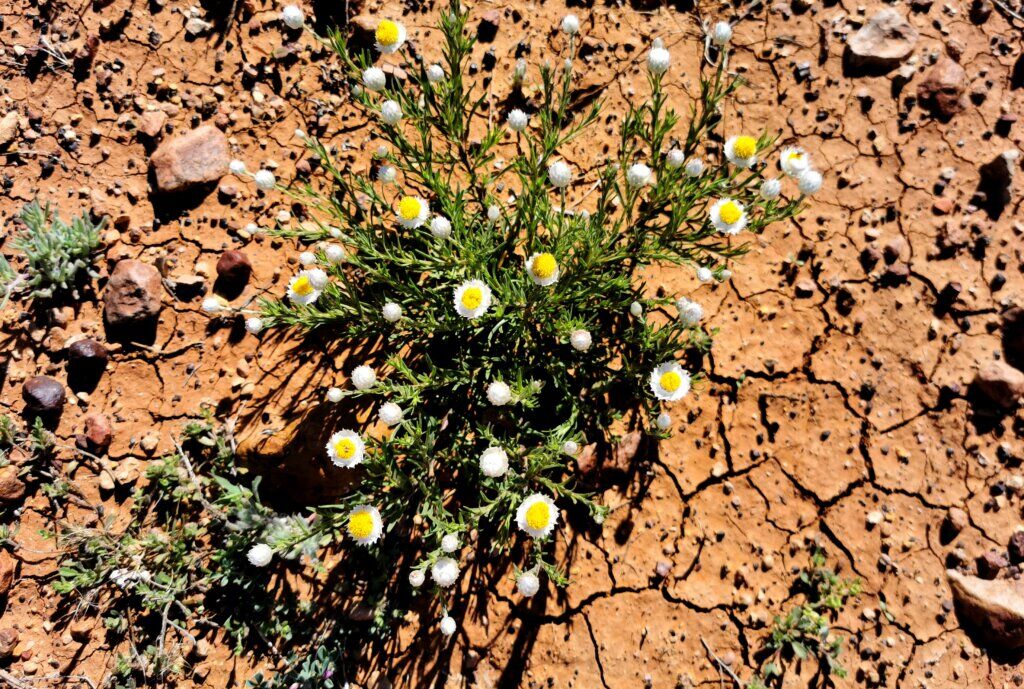
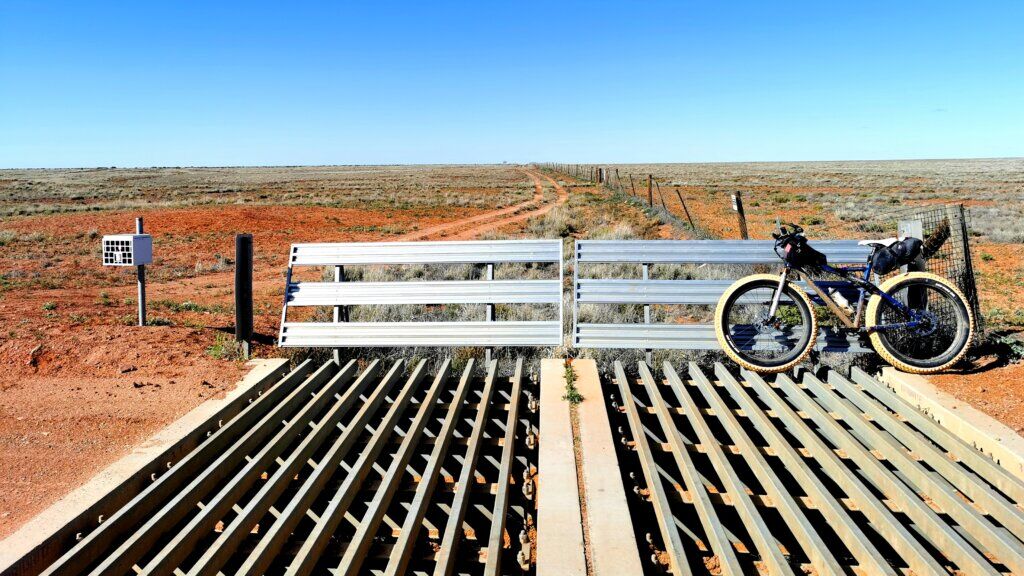
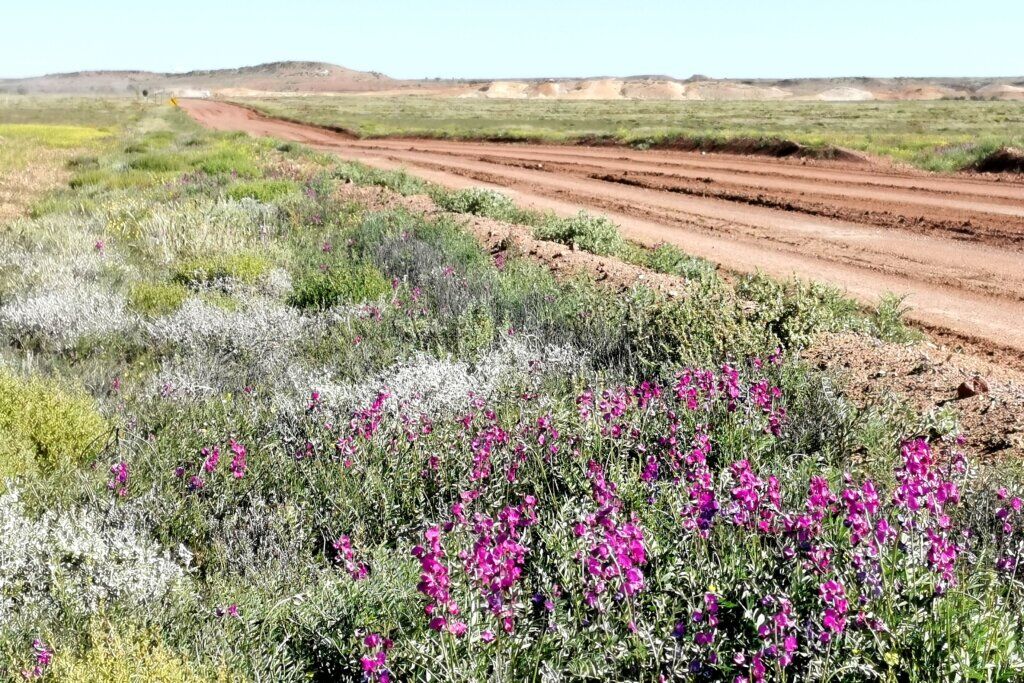
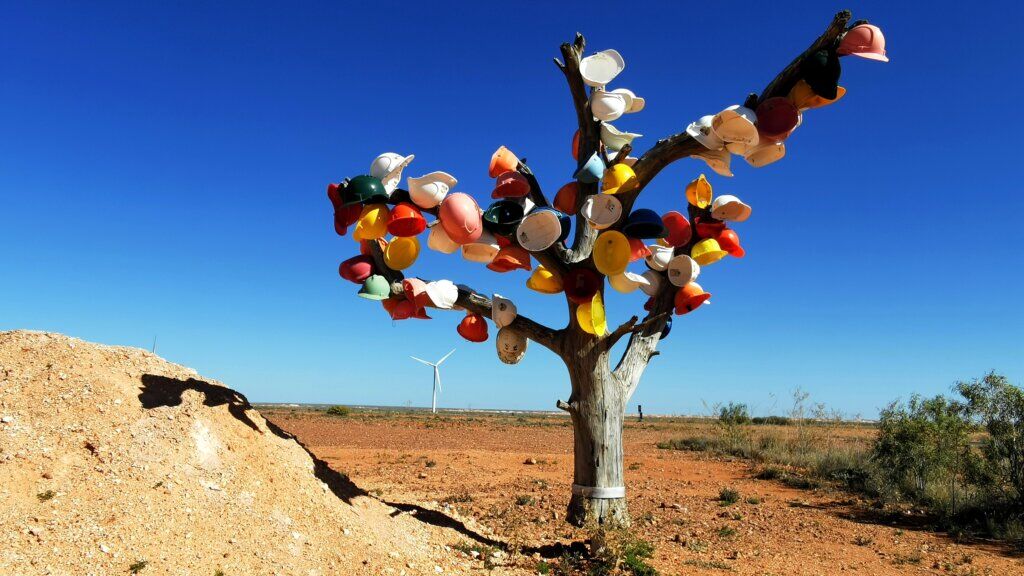
With no rescue truck able to drive along the Coober Pedy-William Creek Road due to some flooded spots, Martin decided to drive carefully to Coober Pedy. From there the only option was to truck it back to Martin’s trusted mechanic in Melbourne. Fixing the diff is a complex job and the specific Ford parts are not readily available in Australia. Martin has done everything he can; arranging transport for the truck to Melbourne, the mechanic has sourced the parts in readiness to start work the moment it arrives, etc. However, the best case scenario is that we are stuck in Coober Pedy for about two weeks.
After all the diversions due to flooding, I had got the expedition back on schedule, arriving in Coober Pedy by 11th July, in time for the change over of filmmakers the next day. Now I have to reorganise the schedule, depending on how much time the repairs take.
Mark Game arrived from the UK (a bit of a shock travelling from London to Coober Pedy!) and Gelareh left on the same plane, flying to New York via Tehran. Gelareh has done a brilliant and professional job for almost five weeks. She really embraced her work and we were all sad to see her off; the support team waving from the Coober Pedy Airport viewing space until the plane had left the tarmac!
